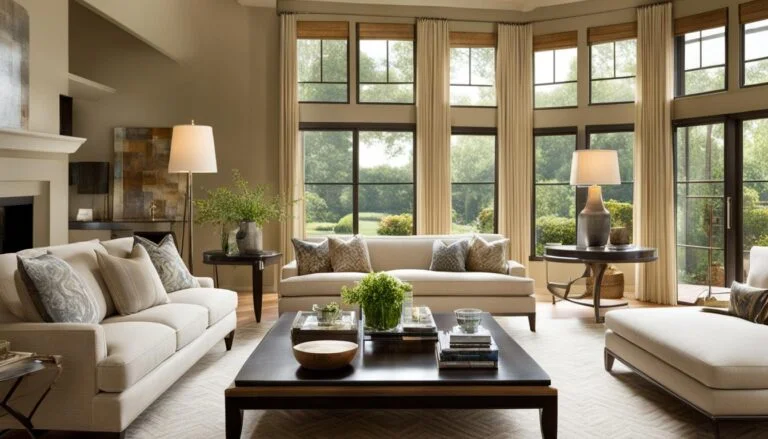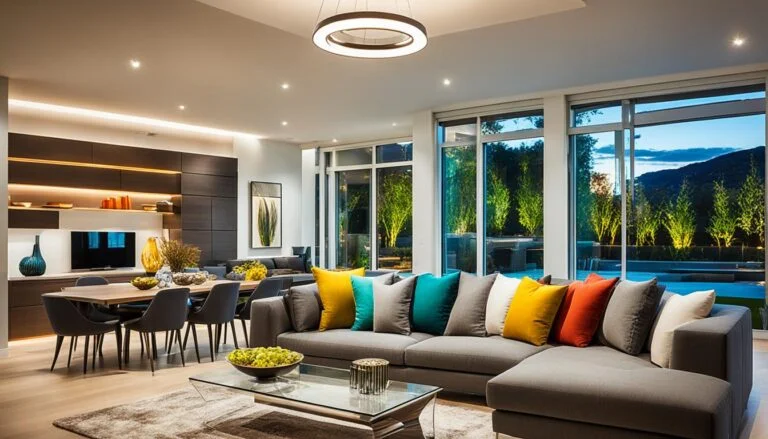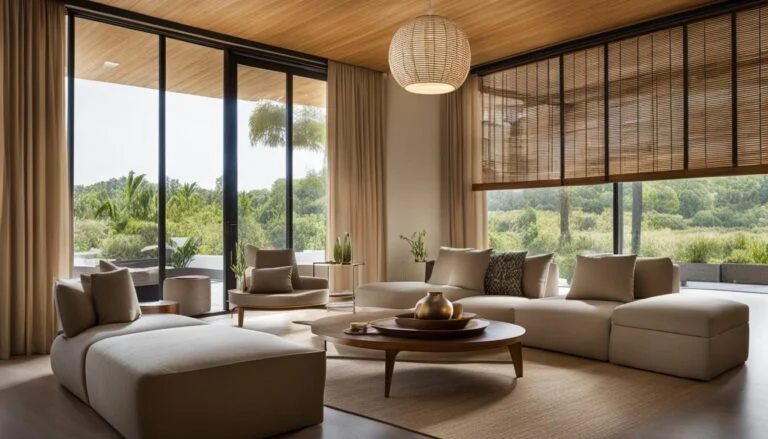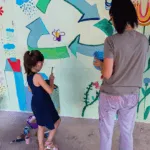Welcome to the world of modern office design trends where aesthetics meet functionality. In this era, offices are no longer just dull rooms with desks and computers, but vibrant and dynamic spaces that inspire creativity, collaboration, and productivity. The evolving concept of office design focuses on creating work environments that not only look visually appealing but also empower employees to perform at their best.
Office design trends have shifted towards multifunctional and agile workspaces that adapt to the ever-changing tasks at hand. Technology plays a pivotal role in this transformation, offering interactive tools and automation that enhance productivity and streamline work processes. Color psychology also takes center stage, with vibrant color palettes strategically chosen to evoke desired emotions and enhance focus.
Moreover, the importance of eco-friendly designs and sustainable materials cannot be overstated. Companies are embracing their corporate responsibility by incorporating environmentally conscious practices into their office spaces. From materials made from recycled fabrics to energy-efficient lighting, these sustainable choices contribute to a greener and healthier work environment.
Join us as we delve into the future of office design, exploring the role of technology, the impact of color psychology, the significance of eco-friendly practices, and the evolution of office layouts. Discover the latest trends that are revolutionizing workplace aesthetics and transforming the way we work.
Key Takeaways:
- Modern office design trends prioritize aesthetics and functionality.
- Technology plays a crucial role in creating connected and productive workspaces.
- Color psychology influences office design to evoke specific emotions and improve focus.
- Eco-friendly office spaces are becoming increasingly popular.
- Office layouts are evolving to cater to the changing needs of the workforce.
The Role of Technology in Modern Office Design
Technology is revolutionizing the way we design and experience modern offices. It has become an integral part of creating work environments that are not only visually appealing but also highly functional and efficient. Interactive tools, automation, and advanced communication systems are transforming traditional office spaces into cutting-edge workplaces that foster collaboration and productivity.
One of the key advancements in modern office design is the integration of interactive whiteboards. These digital work surfaces enable employees to brainstorm ideas, collaborate on projects, and share information seamlessly. With the touch of a finger, teams can annotate, edit, and save their work, making meetings and presentations more dynamic and engaging.
Virtual conferencing facilities have also become essential in the era of remote work and global teams. High-definition video and audio capabilities allow employees to connect with colleagues and clients from around the world, bridging geographical barriers and facilitating real-time collaboration. Virtual conferencing enables face-to-face interactions, ensuring that team members can communicate and work together effectively, regardless of their physical location.
Automation is another significant technological advancement that has revolutionized office design. AI-based tools and systems automate routine tasks, freeing up employees’ time and allowing them to focus on more complex and strategic work. Automation not only increases efficiency but also reduces the likelihood of errors, ensuring accuracy and precision in day-to-day operations.
Incorporating technology into office design has a profound impact on employee engagement and satisfaction. When employees have access to interactive tools, efficient communication systems, and time-saving automation, they can work more effectively and feel empowered in their roles. This fosters a positive work environment that encourages creativity, innovation, and collaboration.
“Technology is not just a tool; it’s a catalyst for modern office design. By leveraging interactive tools and automation, companies can create workspaces that inspire creativity, enable efficient collaboration, and promote employee well-being.”
Benefits of Technology in Modern Office Design
- Enhanced collaboration and communication
- Improved productivity and efficiency
- Streamlined workflows through automation
- Facilitation of remote work and global team collaboration
- Opportunities for creative problem-solving
| Technology in Modern Office Design | Benefits |
|---|---|
| Interactive whiteboards | Facilitate collaboration and brainstorming sessions |
| Virtual conferencing facilities | Connect remote teams and enable real-time communication |
| Automation tools | Increase efficiency and reduce errors |
The Impact of Color Psychology in Office Design Trends
Color psychology plays a vital role in office design, as it has the power to evoke specific emotions and influence productivity. In fact, studies have shown that different colors have psychological impacts on individuals. By strategically incorporating colors into the workplace, companies can create environments that enhance focus, efficiency, and employee well-being.
When it comes to choosing colors for office design, it’s important to consider their psychological effects. For example, blues and greens are known for their calming properties, making them ideal for areas where employees need to concentrate and stay focused. These colors promote a sense of serenity and tranquility, helping to reduce stress and enhance productivity.
On the other hand, reds are associated with excitement and energy. While they can stimulate creativity and motivation, it’s crucial to use them in moderation to avoid overwhelming employees, which can result in stress. Similarly, yellows can be used to inspire creativity and innovation, but they should be used sparingly as excessive exposure to this color can lead to fatigue.
Modern office design trends embrace vibrant and thoughtful color palettes that align with the company’s brand and resonate with employees. By carefully selecting color combinations that reflect the company’s identity and values, office spaces can become more visually engaging and inspiring.
Take a look at the vibrant color palette below to see how different colors can be combined to create an uplifting and energizing office environment:
| Color | Psychological Effect |
|---|---|
| Blue | Calming, enhances focus and efficiency |
| Green | Relaxing, promotes tranquility and reduces stress |
| Red | Exciting, stimulates energy and motivation (use sparingly) |
| Yellow | Creative, stimulates innovation and inspiration (use in moderation) |
| Orange | Energetic, promotes enthusiasm and encourages social interaction |
| Purple | Creative, encourages introspection and fosters imagination |
By understanding the impact of color psychology in office design, companies can create work environments that not only reflect their brand but also positively influence employee well-being, productivity, and overall satisfaction.
Office Design Trends Creating Eco-Friendly Office Spaces
Creating eco-friendly office spaces has become a corporate responsibility, with a focus on eco-friendly design and sustainable materials. Companies are increasingly recognizing the environmental impact of their operations and are taking steps to reduce their carbon footprint. By incorporating sustainable practices, offices can contribute to a greener future while also creating a healthier and more productive workspace.
One crucial aspect of eco-friendly office design is the choice of sustainable materials. Instead of relying on traditional materials that have a negative impact on the environment, designers are opting for alternatives such as recycled fabrics and sustainable woods. These materials not only reduce waste but also minimize the use of non-renewable resources, making them a more environmentally conscious choice.
Aside from material choices, companies are also adopting energy-efficient practices to create a sustainable office. Implementing energy-efficient lighting solutions can significantly reduce energy consumption while providing a well-lit and comfortable work environment. Encouraging employees to use reusable coffee cups and opting for public transportation promotes sustainable commuting habits and reduces waste generated from single-use items.
“Sustainability is not just a trend but a responsibility towards the planet we inhabit. By embracing eco-friendly design and incorporating sustainable materials, companies can make a significant impact on the environment and inspire others to follow suit.”
These small but significant steps contribute to a more eco-friendly and responsible work environment. By demonstrating a commitment to sustainability, offices can not only reduce their environmental impact but also attract socially and environmentally conscious employees and clients. Incorporating eco-friendly practices into office spaces is a win-win situation, benefiting both the planet and the people who inhabit these spaces.
Sustainable Materials in Office Design
The choice of sustainable materials in office design is a crucial step towards creating an eco-friendly workspace. Here’s a table showcasing some popular sustainable materials and their benefits:
| Material | Benefits |
|---|---|
| Bamboo |
|
| Recycled Plastic |
|
| Recycled Fabric |
|
| Reclaimed Wood |
|
By incorporating these sustainable materials into office design, companies can embrace eco-friendly practices without compromising on aesthetics or functionality. The responsible use of materials helps create a positive impact on the environment and sets a sustainable example for the industry.
The Evolution of Office Layouts
Modern office layouts are continuously evolving to meet the changing needs of the workforce. The traditional concept of an office desk is giving way to more flexible and adaptable designs that prioritize collaboration and dynamic work environments.
One popular trend is the incorporation of co-working spaces, where employees from different teams can easily interact and exchange ideas. These shared spaces encourage cross-department collaboration and foster innovation. Additionally, privacy pods are gaining popularity as they provide employees with quiet areas for focused work or sensitive conversations.
Well-being-centric areas are also becoming an essential part of office layouts. Companies are recognizing the importance of creating spaces that promote employee health and happiness. Design elements like standing desks, ergonomic chairs, and indoor plants are being integrated to enhance well-being and create a more comfortable work environment.
Moreover, natural light is receiving increased emphasis in office design. Research has shown that exposure to natural light has a positive impact on employee mood, productivity, and overall well-being. By incorporating large windows and open spaces, offices can harness the benefits of natural light and create a more vibrant and inspiring atmosphere.
Flexible Office Layouts
Flexibility is a key feature of modern office layouts. The ability to quickly adapt and reconfigure workspaces allows companies to respond to changing business needs and accommodate different work styles. Flexible layouts can include movable furniture, modular walls, and flexible partitions that can be rearranged based on the task at hand.
Adaptable Office Spaces
Adaptability is another essential aspect of office design. Workspaces need to be versatile enough to cater to the diverse needs of employees. Adaptable office spaces can be easily transformed to support various activities, such as team meetings, individual work, or creative brainstorming sessions. By providing a range of spatial options, companies can create an environment that encourages productivity and supports different work styles.
“The evolution of office layouts reflects a shift in the way we work. Emphasizing collaboration, well-being, and adaptability, these designs prioritize the needs of employees and promote a positive work environment.”
The Latest Trends in Workplace Design
The world of workplace design is constantly evolving to keep up with changing demographics, technological advancements, and the need for employee satisfaction and engagement. Today, workplace design is focused on creating spaces that are flexible, adaptable, and future-focused, catering to the evolving needs of employees.
One of the key trends in workplace design is the shift towards activity-based design. This approach involves creating a variety of workspaces that cater to different tasks and activities. Blending private, semi-private, and open work areas allows employees to choose the environment that best suits their needs at any given time.
“Activity-based design creates the perfect balance between collaboration and focus. It offers employees the freedom to choose their workspace based on the task at hand, promoting productivity and well-being,” says Jane Dawson, a workplace design expert.
Future-focused design is also gaining popularity in workplace design. Companies are embracing futuristic technologies and innovative ideas to create offices that are not only aesthetically pleasing but also equipped for the challenges of tomorrow. This includes incorporating smart workspace solutions, IoT devices, and advanced communication tools to enhance productivity and collaboration.
Employee well-being and satisfaction are at the heart of modern workplace design. Companies are creating spaces that prioritize the physical and mental well-being of employees. This includes incorporating elements of biophilic design, such as natural lighting, greenery, and ergonomic furniture, to create an environment that promotes health and reduces stress.
In addition, workplace design is embracing the concept of the blended workspace, which combines traditional office layouts with remote working options. The rise of flexible work arrangements and remote work has led companies to create spaces that cater to both in-person collaboration and virtual communication.
Key Workplace Design Trends:
- Activity-based design that offers flexibility and choice
- Implementation of future-focused technologies and innovative solutions
- Focus on employee well-being and satisfaction through biophilic design
- Blended workspaces that accommodate in-person and remote collaboration
As the workplace continues to evolve, so does the design that supports it. By staying up-to-date with the latest workplace design trends, companies can create environments that foster collaboration, inspire creativity, and provide a positive employee experience.
Conclusion
Modern Office Design Trends plays a crucial role in shaping the future of workplace aesthetics and employee engagement. As trends continue to evolve, companies are recognizing the importance of creating workspaces that cater to the needs and preferences of their workforce. By incorporating modern technologies, sustainable practices, and thoughtful design elements, businesses can create work environments that enhance creativity, teamwork, and efficiency.
With a focus on collaboration, flexibility, and adaptability, modern office layouts are moving away from traditional desks and embracing multifunctional workspaces. Co-working areas, privacy pods, and well-being-centric spaces are becoming increasingly popular, promoting employee well-being and satisfaction. Furthermore, the use of natural light and ergonomic furniture helps improve productivity and overall well-being.
Color psychology also plays a significant role in office design, with vibrant color palettes strategically used to elicit specific emotions and enhance productivity. Blues and greens promote a calming effect, while stimulating shades of red and yellow can boost energy and creativity when used thoughtfully. By aligning color choices with the company’s brand and employee preferences, modern office spaces inspire and invigorate.
As workplace trends evolve, creating engaging and inspiring office environments will remain a top priority for businesses. By embracing modern office design principles and staying attuned to shifts in employee needs, companies can foster a culture of collaboration and innovation, ultimately driving productivity and success in the modern workplace.
FAQ
What are some current office design trends?
Current office design trends include creating multifunctional and agile workspaces, integrating technology for productivity enhancement, considering color psychology for vibrant palettes, and incorporating eco-friendly designs.
How does technology play a role in modern office design?
Technology plays a crucial role in modern office design by providing interactive tools, automation, and virtual conferencing facilities, enabling collaboration, communication, and efficiency in the workspace.
What is the impact of color psychology in office design?
Color psychology in office design helps create specific emotional responses and affects productivity. Vibrant color palettes are used to promote focus, energy, and creativity while considering individual and company preferences.
How can eco-friendly office spaces be created?
Eco-friendly office spaces are created by using sustainable materials, adopting energy-efficient practices, and promoting responsible everyday choices such as using reusable items and supporting public transportation.
How are office layouts evolving?
Office layouts are evolving to become more flexible and adaptable, incorporating collaborative spaces, privacy pods, and well-being-centric areas. Natural light and ergonomic furniture are emphasized to enhance employee well-being.
What are the latest trends in workplace design?
The latest trends in workplace design include blended, activity-based designs that offer a mix of private, semi-private, and open workspaces. The focus is on creating spaces for collaboration, focus, and efficiency while prioritizing employee well-being and satisfaction.












